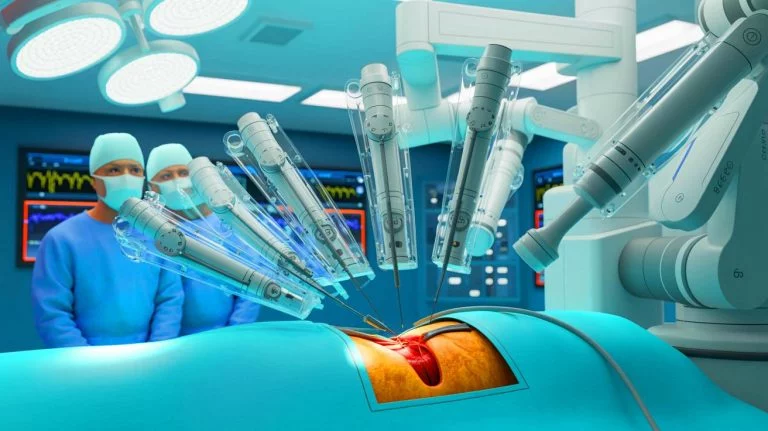| IN A NUTSHELL |
|
In a groundbreaking medical achievement, surgeons at the Cleveland Clinic have successfully performed the first-ever robotic aortic valve replacement using a transcervical approach. This innovative procedure bypasses the need for traditional chest incisions, offering a less invasive alternative for patients requiring aortic valve replacement. The use of robotics in this manner marks a significant advancement in heart surgery, potentially transforming recovery times and patient experiences. The Cleveland Clinic’s pioneering approach has already been applied to four patients, all of whom experienced rapid recoveries, heralding a promising future for heart surgery techniques.
No Scalpel to Sternum
Dr. Marijan Koprivanac, a renowned cardiothoracic surgeon at the Cleveland Clinic, has led the charge in developing this revolutionary procedure. Unlike traditional aortic valve replacement (AVR) surgeries that necessitate a sternotomy, which is the opening of the chest, this new technique eliminates the need for such invasive measures. Instead, surgeons utilize a transcervical approach, accessing the heart through a small incision in the neck. This method minimizes trauma and significantly reduces recovery time.
The transcervical technique involves inserting a robotic system through a natural neck crease, allowing surgeons to have enhanced precision and control. The robotic arms facilitate the debridement of the diseased valve and the implantation of a new prosthetic valve through four small incisions. The patients who underwent this procedure reported low pain levels, primarily managed with over-the-counter medications like acetaminophen and ibuprofen. This approach not only reduces physical trauma but also lessens the psychological burden associated with more invasive surgeries.
Fast Recovery, Bold Future
The initial results of this procedure are promising. In the first four cases, patients aged between 60 and 74 years were treated using the transcervical robotic AVR. The average cross-clamp time, a critical measure of surgical efficiency, was about 140 minutes. However, one patient experienced postoperative heart block requiring a pacemaker, extending their hospital stay. Despite this, most patients were discharged within 3 to 4 days, with one patient resuming gym activities just a week after surgery.
Dr. Koprivanac and his team are committed to refining this technique further. Their goal is to reduce the cross-clamp time to 90 minutes, with aspirations of achieving even shorter durations in the future. To support this, they are developing new surgical instruments and adapting sutures to better fit the anatomical constraints of the procedure. Such advancements could potentially allow for patient discharge as early as postoperative day two, revolutionizing recovery timelines for surgical AVR.
Innovations and Implications
The implications of this technique extend beyond individual patient outcomes. By standardizing the procedure, the Cleveland Clinic aims to disseminate this innovative approach to other specialized centers. The potential for this technique to redefine heart surgery is immense, offering a more patient-friendly alternative to traditional methods. Dr. Samir Kapadia, Chair of Cardiovascular Medicine at Cleveland Clinic, emphasizes the significance of this advancement, noting that if the procedure maintains similar safety and efficacy levels as more invasive surgeries, it may become the preferred option for patients.
Furthermore, the experience gained from these initial cases is invaluable. The Cleveland Clinic team is not only refining the surgical process but also contributing to a broader understanding of how robotics can enhance surgical precision and patient outcomes. Their work could pave the way for further innovations in minimally invasive surgeries, potentially influencing how other complex medical procedures are approached.
The Road Ahead
As the Cleveland Clinic continues to pioneer this surgical technique, the medical community watches with anticipation. The success of these initial cases has set a high standard, and the potential to implement this procedure in other institutions could mark a turning point in cardiac surgery. With ongoing improvements and a commitment to safety and efficiency, transcervical robotic AVR could become a staple in modern medicine.
Looking forward, the key question remains: How will these advancements in robotic-assisted surgeries impact the broader landscape of medical treatments, and what other breakthroughs might we expect in the coming years?
Did you like it? 4.5/5 (21)







Wow, this sounds like something out of a sci-fi movie! 🤖
Is this procedure available worldwide or just at the Cleveland Clinic?
Robots doing surgery? What could possibly go wrong? 😅
Thank you, Dr. Koprivanac, for pushing the boundaries of what’s possible in medicine. 🙌
How long until this becomes the standard practice for heart surgery?
I’m curious about the cost of such a procedure. Is it covered by insurance?
Wow, this is amazing news! My grandpa had heart surgery and the recovery was tough. ❤️
I’m a bit skeptical about robots performing surgery. Anyone else?